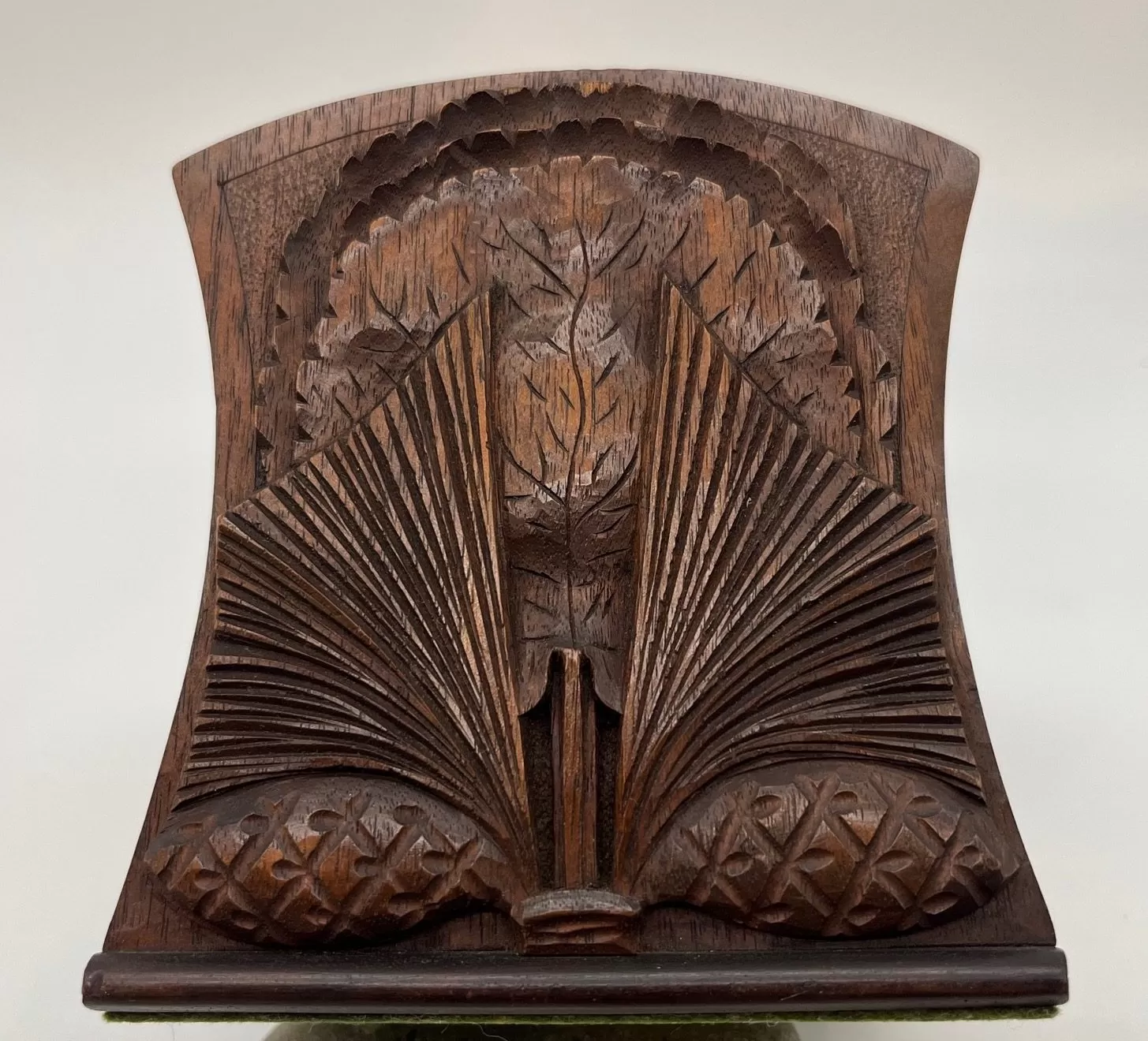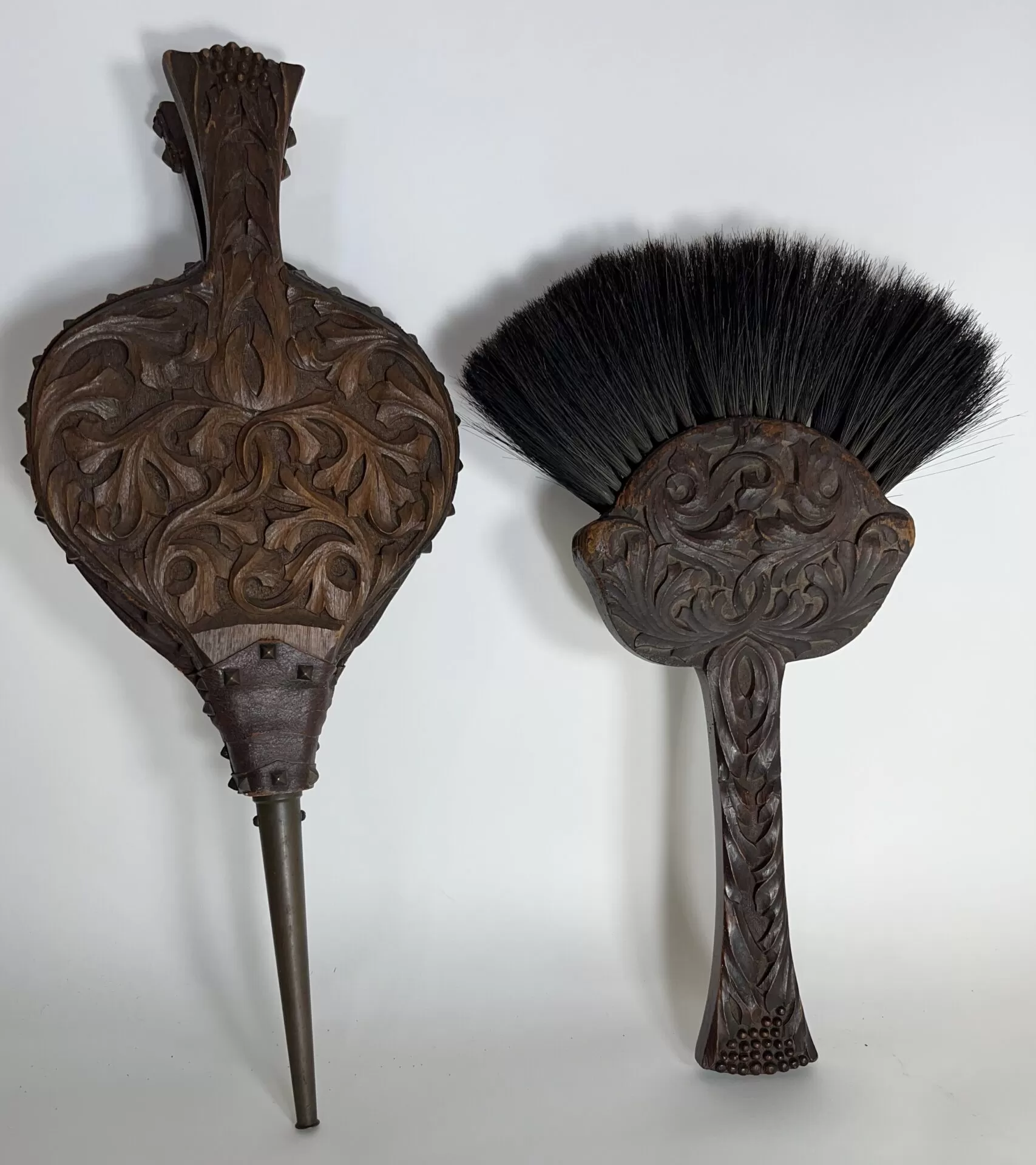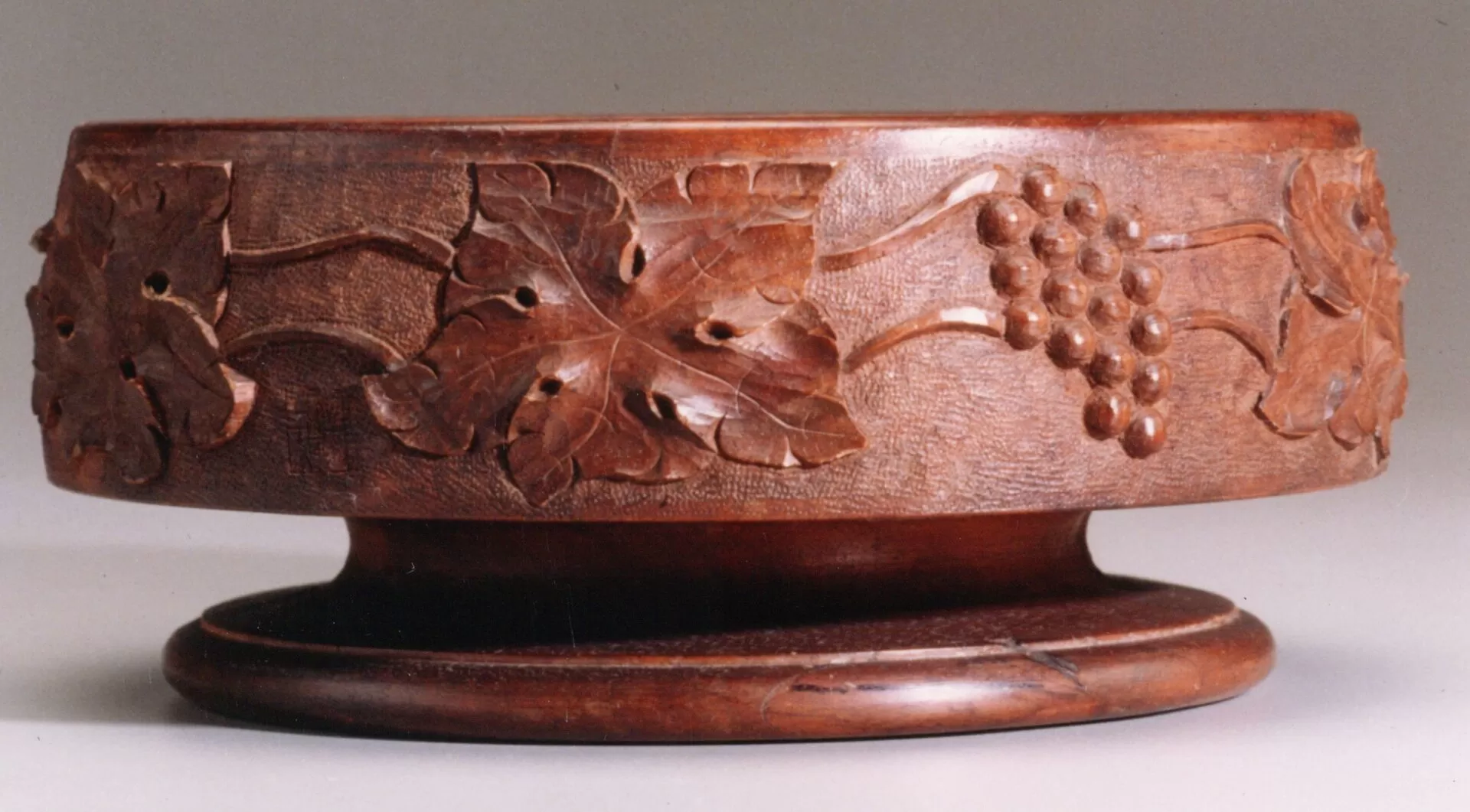The Biltmore Industries, Tryon Toy-Makers and Wood-Carvers
by Bruce Johnson
The young men and women who were skilled enough to merit training under Eleanor Vance and Charlotte Yale at Biltmore Estate Industries in Asheville and Tryon Toy-Makers and Wood-Carvers in Tryon generally started by cutting and carving walnut bookends. For that reason alone, bookends are the most commonly found examples of their work. While beginners may have only carved initials into their first bookends, the more talented soon learned to carve intricate dogwood blossoms, Tudor roses, pine cones, and Galax leaves. (Value for pair: $125-$500.)
Serving trays also were popular. The earliest (1905-1917) featured smooth cast brass handles. Later the Roycroft Copper Shop provided the woodworkers with hammered copper handles. The earliest trays also were constructed of thin, solid bottoms of either mahogany or walnut. Once they obtained a veneer press, their tray bottoms were made of pressed layers of hardwood, which were less likely to separate. Beginning woodworkers chip-carved geometric patterns on the borders. More advanced carvers decorated the frames of the trays with dogwood blossoms and leaves. (Value: $250-$500.)
Since Arts and Crafts homes generally included a fireplace, the woodworkers made matching hearth brushes and bellows. The bellows included a leather bag which expanded as air was drawn into the bellows and compressed to force the air out though a small metal nozzle. As the leather aged and deteriorated, the bellows were often discarded, making them rare today. The hearth brushes proved more durable and easier to display, so have surfaced more often. (Value: Bellows $350-$750, Brushes $150-$350.)
Among the most desirable items they produced were the carved nut bowls. Typically they were approximately nine inches in diameter and three inches in height. After being hand-turned on a lathe, the bowls were carved around the outside, most often with either a trailing grape vine and clusters of grapes, a dogwood branch with leaves and blossoms, or oak leaves and acorns. (Value: $500-$950, with two carved squirrels perched on the rim $1,000-$1,500.)
Just as she had learned at the Cincinnati Art Academy, Eleanor Vance selected the Gothic bench as a transition piece for woodworkers who were ready to transition from trays and bowls to pieces of furniture. Typically measuring 17” x 10” x 17”, these sturdy, practical stools traced their origins back several centuries. Most were designed with a cut-out handle in the top to make them easy to move. The earliest of the Biltmore Estate Industries benches were highly intricate Gothic designs. For her young woodworkers, Vance designed benches with less reliance on 19th century Gothic designs and showing more influence of the Arts and Crafts style. (Value: $750-$1500.)
For more information and to purchase the book online, please visit to the Biltmore Industries and Tryon Toymakers Facebook page.





